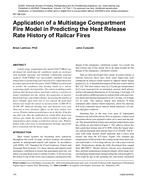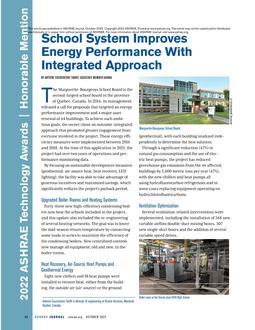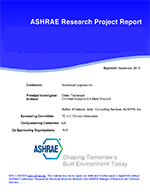Buildings impact human health. The design and operation of an indoor environment influences occupants’ well-being. However little is understood about how the actions of one occupant may influence the health of another person sharing the space. Aerosol transmission has been defined as “person to person transmission of pathogens through the air by means of inhalation of infectious particles”. The source may be an infected person sneezing. Aerosol generation can also happen via coughing, laughing or just exhaling. Pathogens transmitted by respiratory aerosols can travel short or long range from the source becoming a possible source of infection for the people in range. Office spaces are often shared by the employees using cubicles and partition walls. Occupants in two person offices had 50% and in open-plan offices (>6 persons) had 62% more days of sickness absence than occupants in cellular offices. While it is generally accepted that increased ventilation rates in health settings can ensure ‘clean’ environments, a similar approach is not feasible for more general ventilated spaces such as offices and school rooms. How far will the pathogens spread via the aerosol route and what will influence/control the spread? This study focuses on investigating the spread of aerosols after sneezing in a ventilated office space and the length of time they reside in the breathing zone thus estimating the possibility of infection of another occupant. A detailed computational fluid dynamics investigation showed that for mixing and displacement ventilation both air changes per hour (ACH) and furniture presence has significant effect on the number of particles staying in the breathing zone thus influencing infection rates of office occupants. An Eulerian — Langrangian framework is applied for the simulations. The particle movement pattern and the fraction of stagnant air locations are analyzed for mixing and displacement ventilation with varying air change per hour (ACH). The study results illustrate that only focusing on ACH will not ensure the well-being of the occupants regarding exposure to aerosols released in the room. The interior design i.e. furniture orientation, the air inlet and outlet locations and safe space distribution between the working zones can have an equal or even more significant role in determining the most effective, energy efficient and healthy indoor layout.
Citation: 2017 Annual Conference, Long Beach, CA, Conference Papers
Product Details
- Published:
- 2017
- Number of Pages:
- 8
- Units of Measure:
- Dual
- File Size:
- 1 file , 3.6 MB
- Product Code(s):
- D-LB-17-C006


